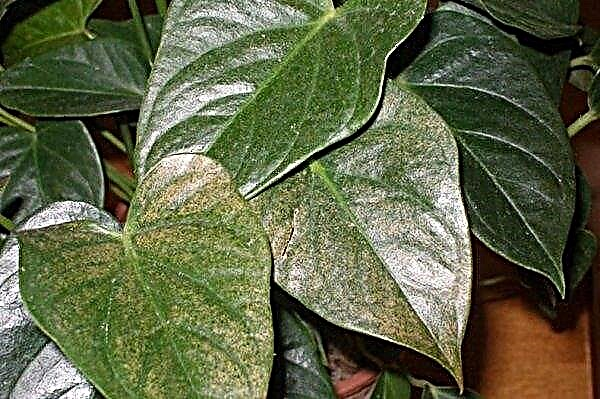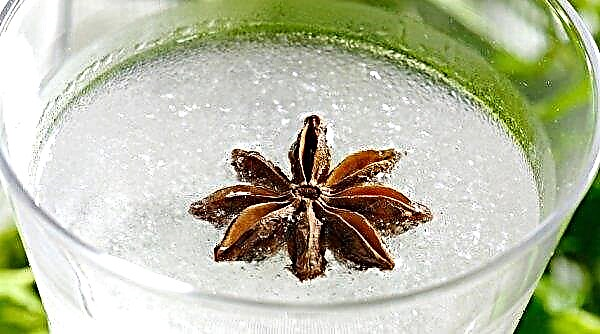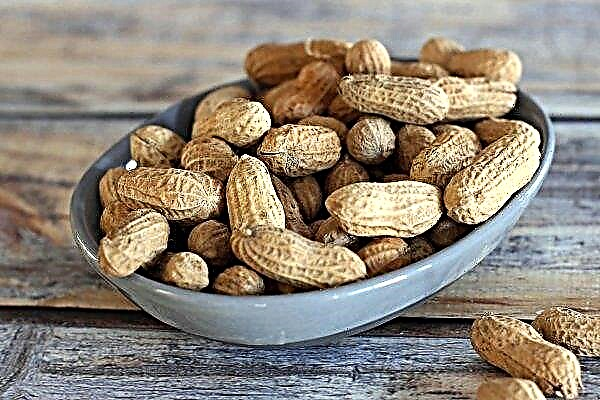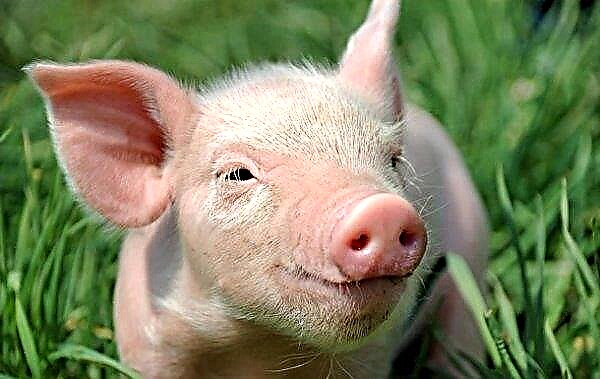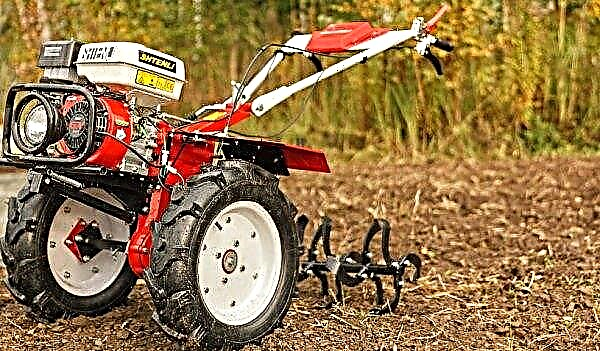Pumping honey from honeycombs is carried out using a honey extractor. The models offered in stores do not always fit in all respects and are of high cost, so beekeepers often use home-made designs. How the honey separator works and how to build it with your own hands, read below.
Why honey extract
If you have only one hive on the site, then a honey extractor is not needed. Honey can be consumed directly from the frame, breaking off the honeycomb. But in the presence of a large number of bee families, this equipment is simply necessary for high-quality pumping. The design is a centrifuge. Inside the centrifuge consists of a non-moving (non-moving stable tank) equipped with a rotating drum. In the drum itself there are several cartridges that rotate around its axis and correspond in size to the frames. After removing the honeycombs from the hive, they are opened and fixed on cassettes. When rotation occurs, honey flows out of the honeycombs, and then through a special hole merges into prepared containers.
In the drum itself there are several cartridges that rotate around its axis and correspond in size to the frames. After removing the honeycombs from the hive, they are opened and fixed on cassettes. When rotation occurs, honey flows out of the honeycombs, and then through a special hole merges into prepared containers.
The main advantage of using a honey separator is the ability to maintain the integrity of the cells, which allows them to be used again. Among the store models, Falco manual is especially popular. In the line of the Italian company you can find a two-frame design and an 8-frame one. For non-standard hives, it is better to make a honey extract yourself.
Did you know? Bees communicate using pheromones. By smell, they find the way to the hive.
Materials for creating a honey extract
Initially, only wooden honey extractor was used in beekeeping. Today, in the design of equipment used:
- aluminum;
- plywood;
- stainless steel - the most expensive option, but at the same time the most high-quality.

Manufacturing options
Type of honey extractor is determined by technical specifications. So, relative to the mechanisms of arrangement of the cassettes distinguish:
- Radial honey extractor - cassettes are located on the radial perimeter of the drum. The design allows you to maximize the integrity of the cells and for one approach to pump out a large amount of honey.
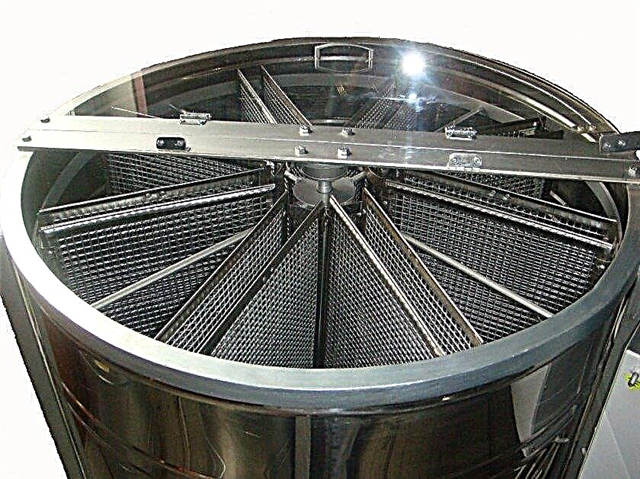
- Hordial honey separator - cassettes are located on the chords of the circumference of the drum. The maximum number of cassettes in such installations is four. When using this type of construction, the risk of cell damage is high.

Chordial constructions are divided into:
- non-negotiable - honey is pumped out on one side of the honeycombs, then they are turned and emptied the second side;
- negotiable manual - hinges are mounted on the axes of the device, on which cassettes are then put on, which allows you to rotate the drum manually in one, then in the other direction;
- reversible - The principle of rotation is the same as in manual, only carried out automatically.
The second criterion that determines the type of honey separator is the drive. It can be manual or electric.
Important! When creating a structure, the most important criterion in choosing a material is its ability to oxidize. The lower it is, the longer the equipment will last and the honey products will be better.
Electric powered
In such designs, the centrifuge rotates due to operation from the mains or battery, which will be beneficial when pumping honey in the field. The electric honey extractor is more suitable for large apiaries producing tons of honey products. The advantage of this design is the ability to control the speed and direction of rotation. The disadvantage is the dependence of the device on the power source, as well as the difficulty in maintenance.
The advantage of this design is the ability to control the speed and direction of rotation. The disadvantage is the dependence of the device on the power source, as well as the difficulty in maintenance.
Without electric drive
The rotation of the drum is carried out manually. This is a traditional honey extract. Its advantage is the relatively low cost and the ability to use in any conditions. Unlike the previous model, this one is independent of the power source. The disadvantage of the design is the low pumping speed and the difficulty in monitoring the speed of rotation, which can lead to damage to cells.
How to make a honey extract yourself
First you need to prepare the drawings and make a trial layout on paper or cardboard. The simplest is the design, designed for 3-4 frames. The diameter of the drum depends on the size and number of frames. The largest diameter is 65 cm.
Did you know? 70% of the nectar collected by the bee is consumed by it during the flight. The raw material dissolves in its goiter and compensates for the energy spent on the flight.
From the washing machine
It is possible to pump out honey by launching the drum manually, but it is better to adapt an electric motor. To do this, you need a 90 W electric motor. When using an electric drive, it is important to have a mesh that will protect insects from getting inside. As a switch, a washing machine relay can serve. As a regulator of the intensity of rotation, you can use a rheostat, which should be equipped with a nichrome spiral. Then a bracket is constructed that carries out the movement vertically. The engine itself can be placed vertically or horizontally. It all depends on your design upgrades to the honey extractor. When the electric motor is ready, you need to think about what you can do yourself, and what parts you need to buy. From the washing machine you only need a tank.
Then a bracket is constructed that carries out the movement vertically. The engine itself can be placed vertically or horizontally. It all depends on your design upgrades to the honey extractor. When the electric motor is ready, you need to think about what you can do yourself, and what parts you need to buy. From the washing machine you only need a tank.
In addition to it, you will need:
- steel beam with a thickness of 4 mm, a width of 80 mm, the length should correspond to the diameter of a specific tank from the washer;
- steel strips with a thickness of 2 mm - this will be the basis for the subframes;
- 2 subframes made of thin metal strips and wire;
- lateral and central gears of a conical shape - the central one should be larger;
- shaft for the central gear - is a carbide rod of steel of suitable diameter;
- a steel plate that will play the role of a shutter to discharge products.
Did you know? Bees are the best logisticians in the world. Having flown over the required area, insects choose the path to the hive, which is the shortest.
The dimensions of the subframe must be calculated so that it includes a frame with dimensions of 435 × 300 mm. If a standard ready-made frame is used, then it will go into such a subframe, since it has smaller dimensions. From a strip of metal and wire, you need to twist a subframe of 520 × 550 mm in size.
The sequence of actions is as follows:
- Take 2 stainless strips of metal 1 mm thick, 520 mm long and 2 550 mm long. Fold them in a rectangle, twist them with bolts and weld.
- Using the thinnest drill, make many holes around the entire perimeter of the resulting rectangle.
- Make a mesh of wire, braiding holes.
- Make the second one the same wire mesh.
- From 2 strips of stainless steel 1 mm thick, 40 mm long, make 2 channels.
- Fasten the mesh plates between the channels.
- Deaf one end of the resulting structure by welding a steel strip.
- To ensure the integrity of the structure, weld across 1 metal strip across the subframe.
- Fix the brackets on the top and bottom of the subframe - they will be used as fasteners to the rotor.
- Prepare the second subframe in the same way.
Video: how to make a honey extract from a washing machine with your own hands, part 1
Now you can proceed directly to the preparation of the tank. First you need to brew tightly all the holes in the tank. Patches are made of stainless steel sheets. To check the tank's performance, at the end of welding, draw water into it to the top. If there is no leak anywhere, the job is done correctly.
Next, you need to prepare a drain hole with a diameter of 25 mm. They drill it at the very bottom of the structure with a step drill. When the hole is ready, put on the rubber O-ring. Then fasten the metal plate opposite the hole so that it can be pushed to the side as needed.
Important! Bees do not like pungent odors, and the aroma of laundry soap soothes them. Before working with the hive, be sure to wear gloves and wash your hands with laundry soap.
Build the bar on the tank. To do this, bend a strip of metal 4 mm thick at the edges with a hammer and anvil, forming the letter "P". Then drill 10 mm holes in the folded parts. In the central part of the crossbar, drill a mounting hole for the shaft of the central gear. The diameter of the hole should slightly exceed the diameter of the shaft by about 2-3 mm. Place the crossbar on the tank exactly in the center and mark the places for the holes on its walls. Attach the crossbar to the tank.
Further steps for assembling the honey extract:
- Take the steel stud, which will be the shaft, and make a thread at its ends.
- Insert the pin into the center hole of the crossbar, put the center gear on it and fasten it with a nut.
- Put the rotor bar on the bottom of the stud and secure it.
- On the edges of the rotor bar, make holes for the frame studs, for which use steel rods 570 mm long. Thread the ends of the rods.
- Next, make a strip with a width of 15 mm, a length of 600 mm. Punch holes at its ends.
- Insert the studs into the brackets of the subframes while threading them into the upper and lower rotor bars. Lock.
- Screw the drive bracket to the crossbar. Pass the curved axis-handle through the bracket, having previously cut the thread at its end.
- Slide the second gear onto the handle so that its teeth lie between the teeth of the central gear. Secure the mechanism with nuts.
Video: how to make a honey extract from a washing machine with your own hands, part 2
Wooden
In this design, it is important which tree it will be made of. Resinous, damp wood is not suitable. For manufacturing you will need:
- 20 mm thick boards;
- slats made of wood with a width of 40 mm, a thickness of 10 mm;
- wooden beams with a section of 3 × 5 cm;
- wooden beams 2.6 × 2.6 cm;
- aluminum plates 2 × 4 × 3 cm.
Important! The height of the legs should be enough to install a 10 liter bucket under the drain hole.
All boards need to be processed with a planer so that their thickness does not exceed 20 mm. Sidewalls are best made from one solid board, which is also treated with a planer. All parts of the body are sheathed with boards 20 mm thick, 190 mm wide. They will be slightly longer than required, taking into account the fact that they will need to be fused off after fixing. The fixing of the boards is carried out so that their fibers lie across.
Using rails (40 × 10 mm), sheath the lower sections of parts A and B. When sheathing, consider the bevels of the ends of the walls of the housing. At the very bottom of Part B, you need to make a hole for pumping out honey with a diameter of 20 mm. Then you need to insert a rubber sealant into the hole and pick up a wooden cork of a suitable size.

To ensure the stability of the structure, you need to build legs. This will require a beam of 30 × 50 mm, an arbitrary height. The legs are fixed in the lower part of the body. To make the design more stable, the legs need to be fixed at a slight angle, and between them, wooden crossbars with a width of 5 cm should be attached.
Aluminum
The manufacturing process of the aluminum structure is identical to the process described for equipment made from the tank of the washing machine. As a drum, you can use containers of suitable sizes:
- a pot;
- a barrel.
The case can even be made of a plastic barrel. The main thing is that the plastic should be of high quality. A stand for such designs is not required. They can be installed on the table, and under it put a bucket for raw materials.
Plywood
It is constructed in the same way as a wooden one. The only difference is that instead of boards, several layers of plywood are used, glued together with glue on wood. For the bottom, it is better to use plywood 10 mm thick. The side panels are glued together, then tightened with a metal hoop. The internal cavity of the structure is treated with wax in several layers. The shaft is constructed, as in the first embodiment, and fixed to the structure. At the top, do not forget to screw the handle that will start the process.
Stainless steel
A stainless steel drum or a stainless steel bucket of a suitable size can be used as a stainless steel tank. A rotor with gears is installed inside such a tank, which will start the operation of the cassettes with the handle. A hole is made in the bottom of the tank to drain the product. If desired, the drain hole can be equipped with a faucet. In addition to the finished tanks, you can use new stainless steel sheets.
Operational Features
Before use, all parts of the honey extract must be washed and dried. Next, the frames with printed honeycombs are inserted into the cassettes and their movement is started, after substituting a container for collecting products under the drain hole. The main requirement for the operation of the honey extract is the high-quality fastening of the tank. This allows not only to facilitate the process of pumping honey, but also to preserve the integrity of equipment parts.
When installing the device, you can use the legs of the crosspiece of a suitable size. Correct installation can be checked using the level. For oppositely located cartridges, you need to select frames of the same weight. At the end of all manipulations, the equipment should be washed under a stream of warm water (+ 40 ° C), then dried.
Lubricate metal parts with machine oil after drying to prevent rust. Honey separator is an extremely important item in the apiary. The device is used for pumping honey. It can be purchased in a store or built from improvised means, spending a minimum of financial investment.




